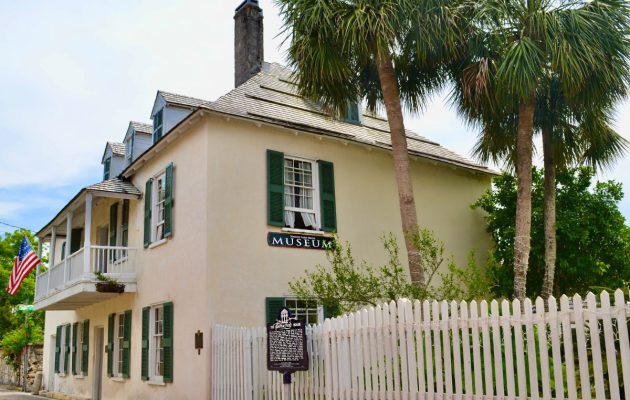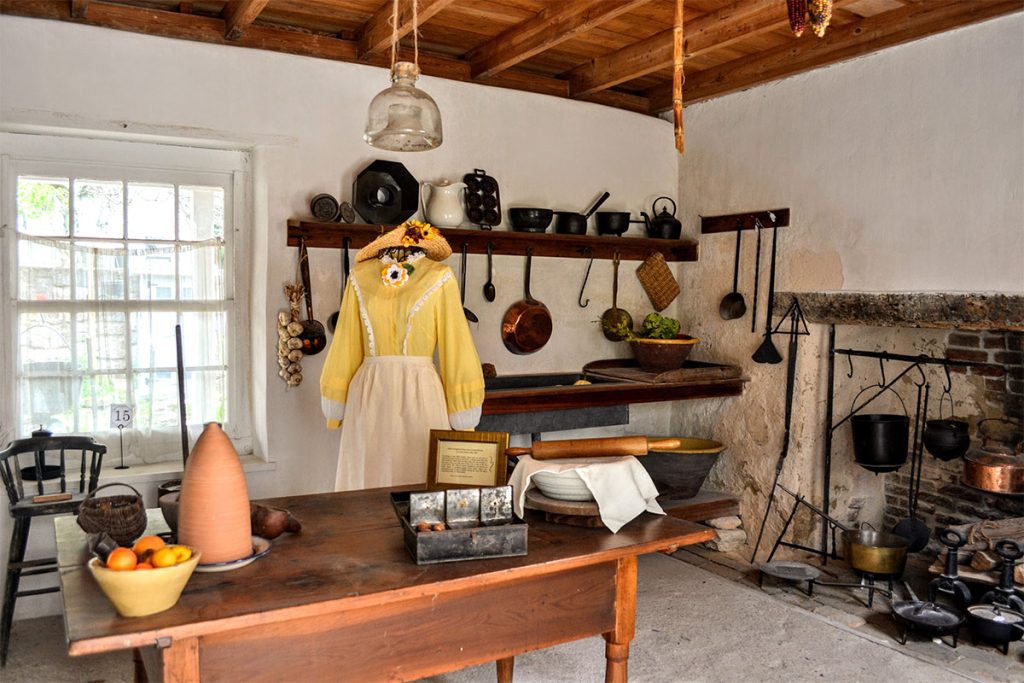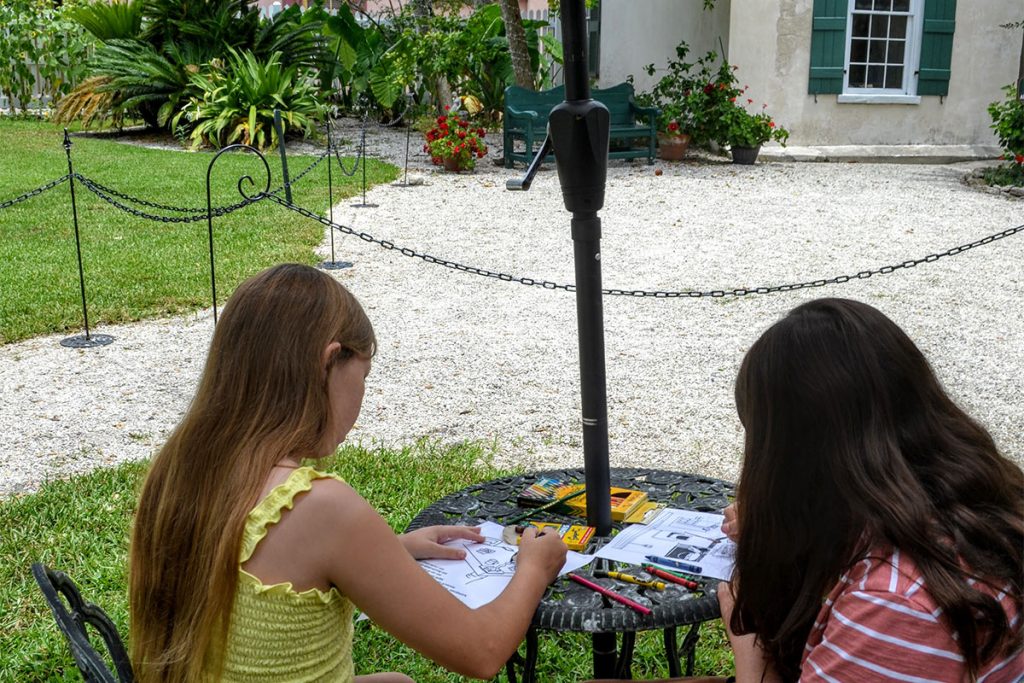Colonial Dames Celebrate Continued Operation of Centuries-Old Ximenez-Fatio House

When the Florida Society of the Colonial Dames of America gathers May 1 for its annual fundraiser, it will celebrate 85 years of owning and managing the 226-year-old Ximenez-Fatio House Museum in St. Augustine. The house, one of the few coquina-and-tabby houses remaining in St. Augustine, is on the National Register of Historic Places and is a Florida Heritage Landmark.
The historic Ximenez-Fatio house, built in 1798, at 20 Aviles St., sits on America’s first platted thoroughfare, which was completed in 1572 under the auspices of King Philip II of Spain and in use 35 years before the Jamestown colony was founded in Virginia.
The Ximenez-Fatio House has a unique history of being mostly owned and managed by women. Margaret Cook purchased the house in 1830. Prior to that, its original owner, Don Andrés Ximenez, built the house in 1798 and lived in it until he died in 1806. From then until 1830, the house was rented to various tenants.
Cook converted the home into a boarding house and hired Eliza Whitehurst to manage it. In 1838, Whitehurst died, and Sarah Petty Dunn Anderson purchased the boarding house. She and her family lived in the house for more than 15 years and, when space was available, rented rooms to visitors.
In 1851, Louisa Fatio became the manager of the house, and in 1855, Anderson sold the property to Fatio, who is remembered for having kept the house afloat during times of economic uncertainty, secession from the Union, reoccupation by Union troops and Reconstruction.
After Fatio’s death in 1875, the house remained in her family until 1939. The National Society of The Colonial Dames of America in The State of Florida purchased it and began the decades long process of meticulously restoring and furnishing the home to become an historic house museum. While, historically, women have been the silent partners of the men who built communities, they have been at the forefront as owners, entrepreneurs and managers of the Ximenez-Fatio House.
The house has more than 3,000 artifacts, and all of the furniture is authentic, including three pieces that were actually owned by people who lived in the house. Each guest bedroom is decorated in a different fashion to celebrate the different types of people who stayed there, for example, an ailing woman, an author or a sea merchant.

“Every room has a story,” said Payson Tilden, Ximenez-Fatio House executive director.
Visitors can view many interesting artifacts. Archaeologically, the house sits on one of the most frequently dug sites in St. Augustine. During a dig in 2002, a rare cross from Caravaca, Spain, was discovered and is on display for guests to view in the museum’s Visitor Center.
“The Caravaca Cross was commissioned by the Spanish church in the early 1600s as a thanksgiving for the end of the Black Plague,” Tilden said.
Two large, framed pieces of Punjab material from East India are hung in the dining room. Children used to gently pull the material back and forth to keep flies and other insects away from the food during meals.
The cheval mirror still seen today at the Ximenez-Fatio House Museum in the “owner’s bedroom” is a piece originally owned by Anderson. Participants in the museum’s monthly “A Night Among Ghosts” event are invited to stand in front of the mirror to see if one of the house’s ghosts will appear.

The museum hosts a number of other events – in addition to regular viewing hours – such as student field trips and tours, scavenger hunts, holiday tours, “Everyday Life” audio tours and the “I Lived Here as Well” tour of those who lived and served in the house but were often unseen. It has an archeological table with screens and shovels for digging and a colonial garden that includes a monarch preserve. Every first Friday of the month, the museum hosts an artisan nights market in the house’s courtyard.
The Colonial Dames will host “Belles, Beaux and BBQ” May 1 at Timuquana Country Club to raise funds to support the Ximenez-Fatio House. All Colonial Dames in Florida are invited to attend with their guests.
“The funds will help with the costs of restoring the pianoforte and L’Engle family portrait, as well as other projects in the house,” said Ellen Stark, co-chairman of the fundraiser, who serves on the board of managers with co-chair and society historian Allison Crisp. Crisp is a fifth-generation native of Jacksonville who grew up in Ortega.
To learn more about the Ximenez-Fatio House Museum and various options for visiting or supporting the continued operation of the house, visit ximenezfatiohouse.org or call (904) 829-3575.
By Karen Rieley
Resident Community News







